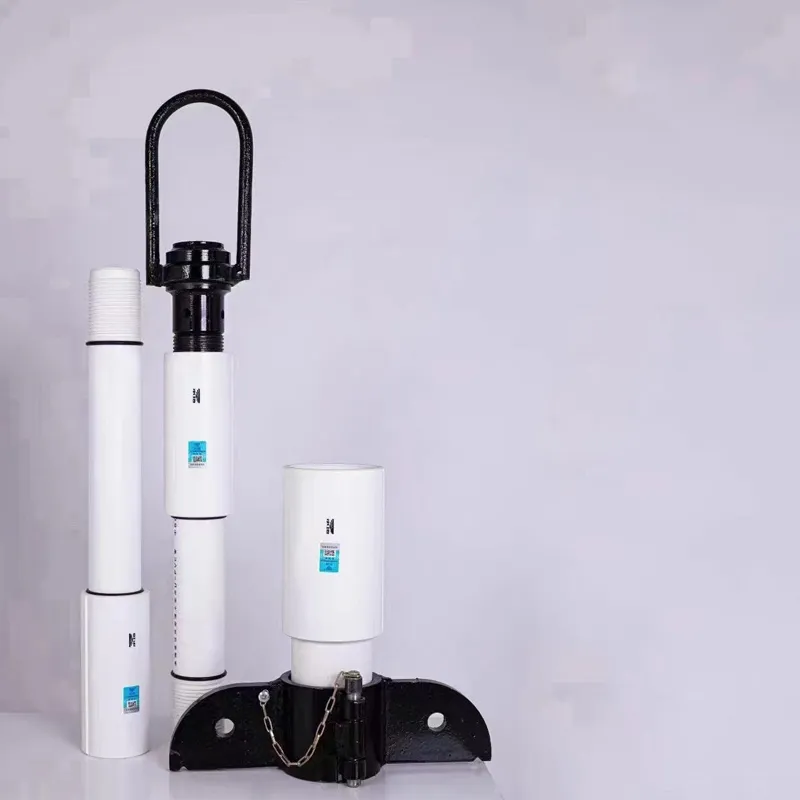Dec . 31, 2024 18:08 Back to list
PPR Pipe Solutions for Hot and Cold Water Applications by Leading Manufacturers
The Significance of PPR Pipes in Hot and Cold Water Systems
PPR (Polypropylene Random Copolymer) pipes have emerged as a preferred choice for plumbing systems, particularly in the transportation of hot and cold water. With increasing demands for efficient and durable water delivery systems, PPR pipes offer a range of advantages that make them stand out in the construction and plumbing industries. This article explores the characteristics, benefits, and manufacturing nuances of PPR pipes, particularly from the perspective of manufacturers.
Understanding PPR Pipes
PPR pipes are manufactured from a thermoplastic polymer known as polypropylene, which is increasingly used in construction due to its robustness and adaptability. The random copolymer aspect signifies that the polymer chains are not arranged in a uniform manner, resulting in improved performance characteristics compared to other types of polypropylene. This unique structure provides PPR pipes with excellent thermal stability, making them suitable for both hot and cold water applications.
Benefits of PPR Pipes
1. Durability and Longevity One of the most notable advantages of PPR pipes is their impressive durability. They are resistant to corrosion, scaling, and chemical reactions, which extends their lifespan significantly compared to traditional materials like metal pipes. This resilience translates into lower maintenance costs and fewer replacements over time.
2. Thermal Insulation PPR pipes exhibit excellent thermal insulation properties. They minimize heat loss in hot water systems, enhancing energy efficiency and reducing utility bills. This characteristic is particularly beneficial in areas with hot water supply systems as it maintains the temperature of the water without excessive energy consumption.
3. Lightweight and Easy to Install Compared to metal pipes, PPR pipes are lightweight and easy to handle, which simplifies the installation process. This characteristic is appreciated by manufacturers and plumbers alike, as it reduces labor costs and installation time. The ease of joining PPR pipes through heat fusion or mechanical fittings further simplifies the installation process.
4. Non-Toxic and Safe PPR pipes are known for their non-toxic properties. They do not leach harmful chemicals into the water, making them safe for transporting drinking water. This is a crucial consideration for manufacturers, especially when meeting stringent regulations regarding potable water systems.
5. Cost-Effectiveness In the long run, the use of PPR pipes can lead to considerable savings. Though the initial cost may be slightly higher than alternatives like PVC, the durability, reduced maintenance, and lower energy costs associated with thermal insulation result in significant savings over time.
ppr pipe for hot and cold water manufacturers

Manufacturing of PPR Pipes
The manufacturing process of PPR pipes is intricate and requires advanced technology to ensure high-quality outputs. The process typically involves several key steps
1. Raw Material Selection Manufacturers begin by sourcing high-grade polypropylene random copolymer resin. This raw material is critical for ensuring the quality and performance of the final product.
2. Extrusion The selected polypropylene is then fed into an extruder, where it is melted and shaped into pipe form. The extrusion technology used plays a significant role in determining the uniformity and strength of the pipes.
3. Quality Control After extrusion, each batch of pipes undergoes rigorous quality testing. Manufacturers check for any defects, ensuring that the pipes meet international standards and specifications for pressure ratings and thermal resistance.
4. Cutting and Packing Once the pipes pass quality control, they are cut to specified lengths and packed for distribution. Proper packing ensures that the pipes are protected during transportation and remain in optimal condition for end-users.
5. Innovation and Research Leading manufacturers are continually innovating to improve the properties of PPR pipes. This includes developing new formulations that enhance their mechanical strength, resistance to higher temperatures, and overall performance.
Conclusion
The role of PPR pipes in hot and cold water systems continues to grow, driven by their many advantages and the needs of modern plumbing systems. As manufacturers develop ever more sophisticated piping solutions, the PPR pipe market is set to expand further, catering to the increasing demands for efficiency, durability, and safety in water delivery systems. The combination of advanced manufacturing techniques and the inherent benefits of polypropylene ensures that PPR pipes will remain a vital component of plumbing infrastructure for years to come.
-
High-Quality PVC Borehole Pipes Durable & Versatile Pipe Solutions
NewsJul.08,2025
-
High-Quality PVC Perforated Pipes for Efficient Drainage Leading Manufacturers & Factories
NewsJul.08,2025
-
High-Quality PVC Borehole Pipes Durable Pipe Solutions by Leading Manufacturer
NewsJul.08,2025
-
High-Quality PVC Borehole Pipes Reliable PVC Pipe Manufacturer Solutions
NewsJul.07,2025
-
High-Quality UPVC Drain Pipes Durable HDPE & Drain Pipe Solutions
NewsJul.07,2025
-
High-Quality Conduit Pipes & HDPE Conduit Fittings Manufacturer Reliable Factory Supply
NewsJul.06,2025

